Text
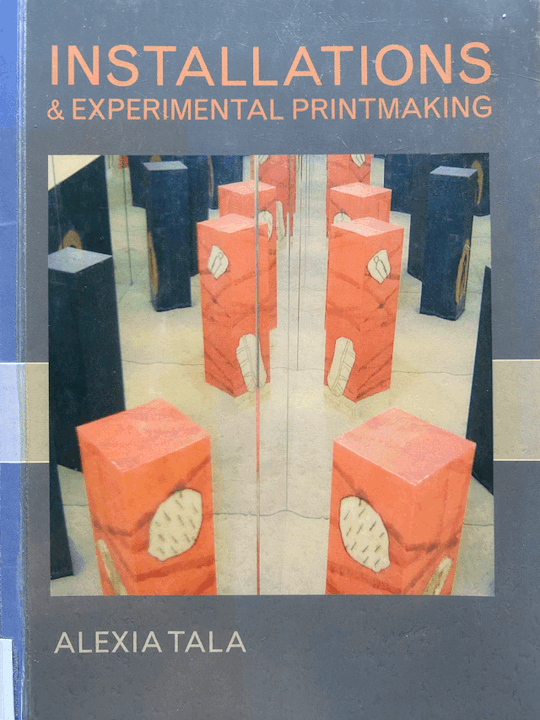


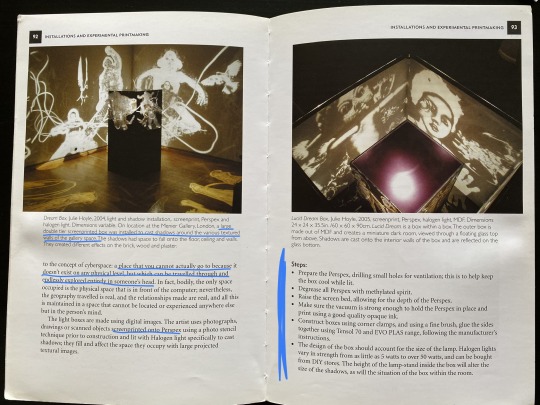
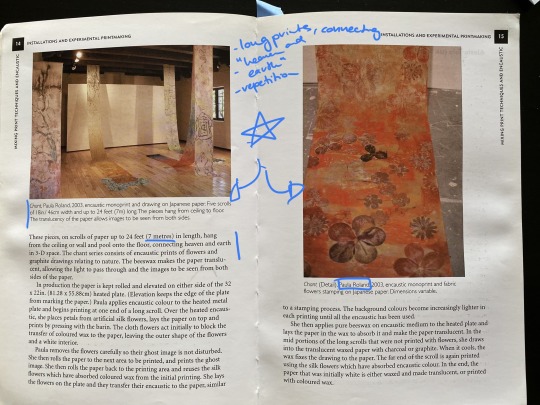
Installations and experimental printmaking
A few interesting installations from the book above.
I would like to point out Paula Roland's work, Chant, which was made as a response to 9/11. Her prints show a repeated pattern of an ancient healing chant. I found this very inspiring and I used repetition in my own practice. These scroll of papers are 7m long which gave me the idea to try to extend my printing limits and set me on the road of working with longer/larger prints.
Tala, Alexia. Installations and Experimental Printmaking. A & C Black, 2009.
0 notes
Text
Long prints

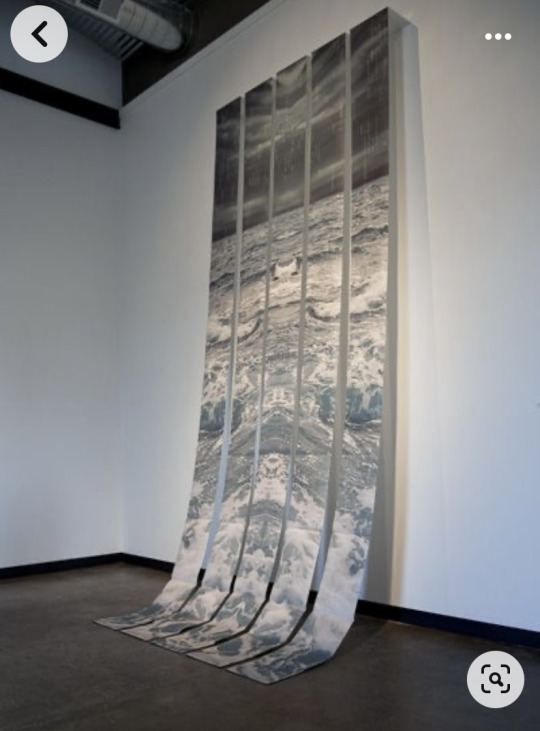
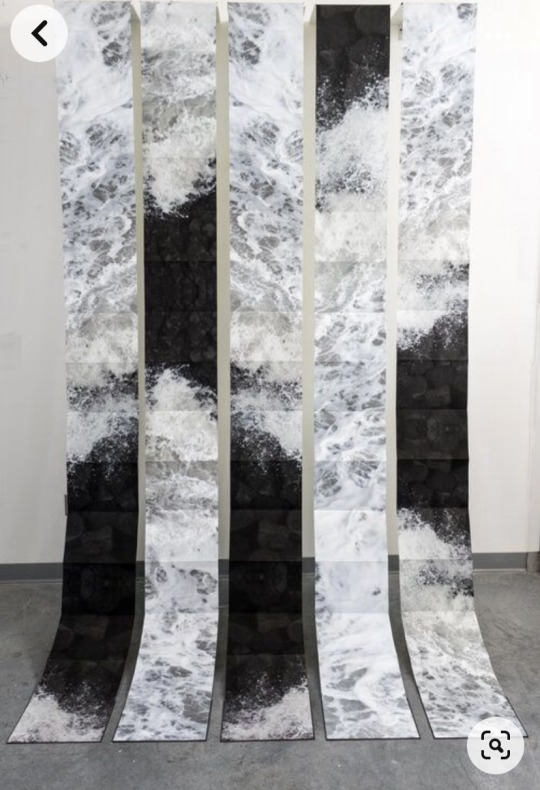

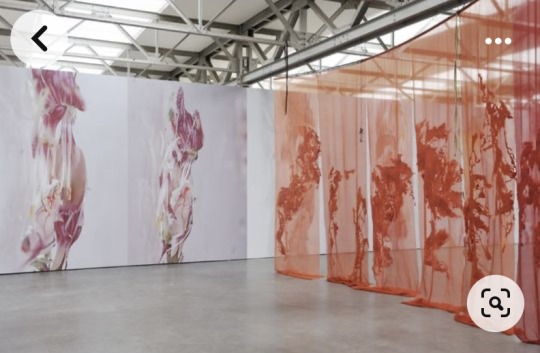
As I have a few very long prints I want to exhibit, naturally I had a look around for inspiration. I really like how a few of these prints come down to the ground and flattens out, I will definitely look into this when I will be hanging my prints. I also like that these prints are not attached to the wall, but to something that holds them away from the wall a little bit, so the prints feel more airy and free.
The very last photo is an interesting one, long but transparent work, basically the combination of my fabric and tracing paper prints. I really like the material used and the colour- there is something visceral, abject in them. They are not strictly connected to my current work, but it's an interesting image/layout to look at.
No 4 - Skinner, Catherine Eaton. Illuminations/Ravens. The Lantern, 4 Nov. 2022, https://www.thelantern.com/2022/04/encaustic-ravens-land-in-grange-insurance-audubon-center-for-the-spring/?fbclid=IwAR1Z4h7iu2nJrFYMvWTlXXX5QHdxCNjebot2mQqrGb3OpTbCoJ8u2SSUyXE.
No. 1,2,3 - Pietrantoni, Nicole. The Falls / The Sea / Precipitous. Nicole Pietrantoni, https://www.nicole-pietrantoni.com.
No. 5 -Mulders, Claudy Jongstra &. Mapping out Paradise. Claudy Jongstra & Marc Mulders, https://www.flickr.com/photos/42212091@N00/albums/72157618313744673/.
0 notes
Text
Examples of fabrics stretched on frames
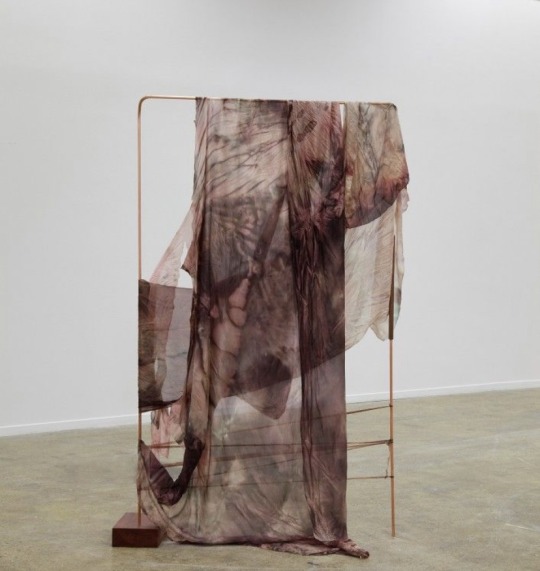

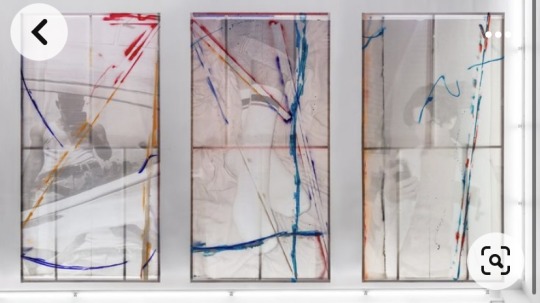

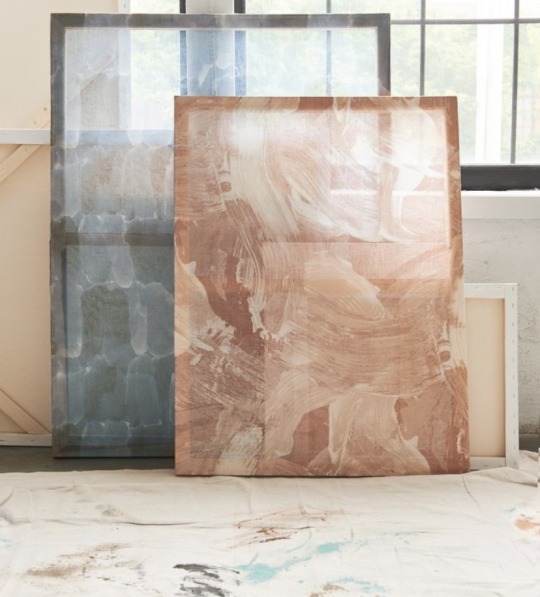
These are a handful of examples of the combination of fabric and frame. I collected these when I was thinking about how I wanted to present my semi-transparent fabric prints.
I really like the first image but sadly my current prints would not fit any arrangement like this but I like the "accidental" nature of this presentation.
Even if I like images 2,3 and 4, I noticed that I don't like when there are extra bits of wood "cutting through" the image. I understand that sometimes frames are made like this to secure the frame itself, maybe due to the size of the frame extra help is needed and other times these extra bits are part of the composition like the one on image 3.
My favourite of these image is image 5, I like that the print/image covers the whole frame, they look simple and clean in the best way possible and I also like the colour of the patters.
Graff, Ane. -. Ane Graff, https://anegraff.com.
Donzeaud, Antoine. La Nuit Blanche. Antoine Donzeaud, https://www.ceyssonbenetiere.com/en/artists/antoine-donzeaud/.
0 notes
Text
Small resin prints by Brooks Shane Salzwedel
I was looking at Salzwedel work before, when I started to make my layered resin objects. His work gave a lot of inspiration and a big push in the start of my process, I started to use the materials he is using in his work such as tracing paper and mark resist. I found these small resin pieces after I finished making my small family prints/objects so it was interesting to see that he worked/works with small scale not just the larger, A3 size works. I really like that he also cast these works in wood/clay/ metal etc. I still think for the subject matter I work with, it works better that I left my objects "naked" without any frame material.
I really like the gloomy, moody landscapes of Salzwedel, even these small prints take me to a certain kind of atmosphere.
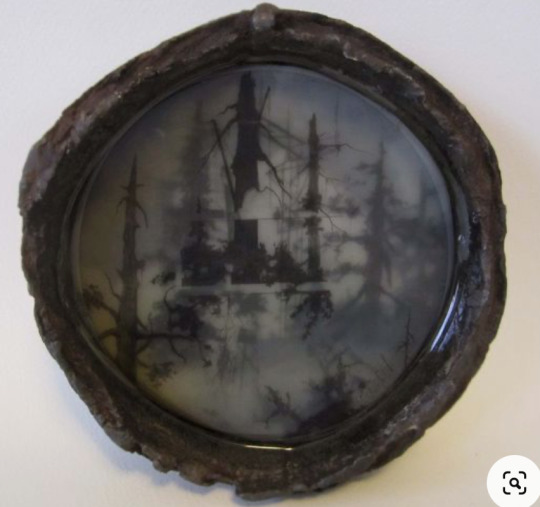
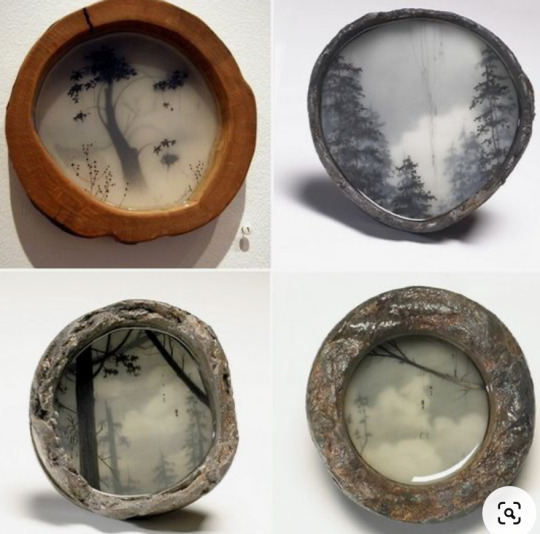

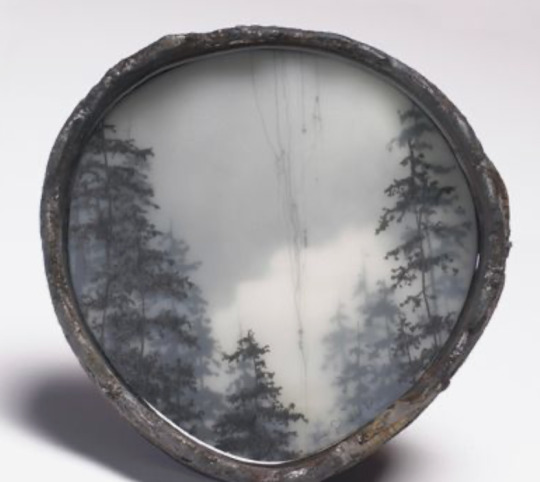
“Brooks Shane Salzwedel.” BROOKS SHANE SALZWEDEL, https://www.brookssalzwedel.com.
0 notes
Text
Victoria Arney - Nightingale and Dawn Chorus
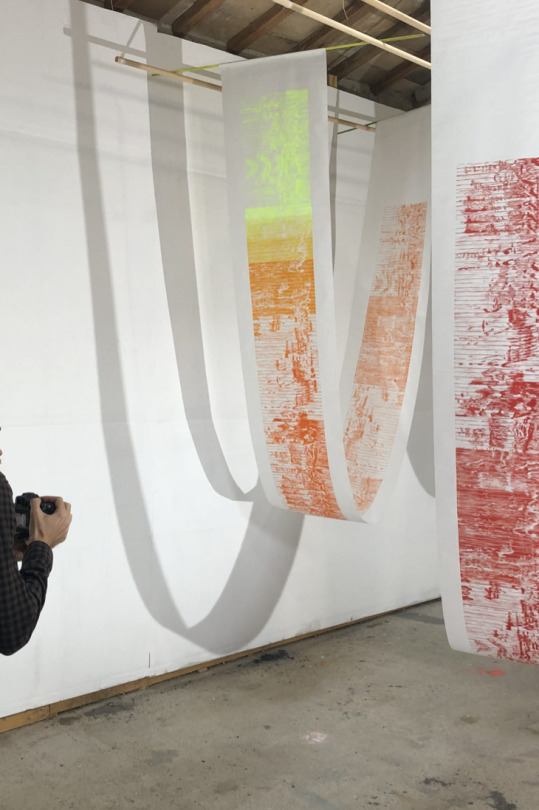



(Nightingale, 2021, woodblock, wood engraving, edition of 6, 157 1/2 × 38 1/5 × 2/5 in | 400 × 97 × 1 cm)
Dawn Chorus, http://www.victoriaarney.com/dawn-chorus
I have done some research on Arney before, but these two artworks caught my eyes when I was looking for long and thin artworks. Arney draws sonograms which show the shape of her bird song recordings. She is only making small editions of these wood engravings and the use of wood connects with the nature where she recorded her birdsongs. "Installed they allow the viewer to walk amongst them and gently move with the passage of air around them "
I really like the colours used in these prints and I really enjoy the way they are exhibited/installed. It's nice/ interesting to see how she was using the light, most likely bamboo stick/rods to hang the prints in "U" shape, giving me ideas for my own exhibition piece.
���Victoria Arney’. Victoriaarney.com, http://www.victoriaarney.com.
0 notes
Text


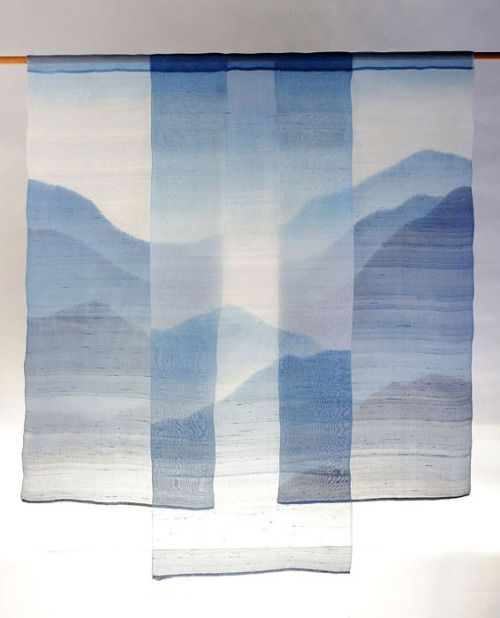


Some more exhibition ideas. Again, I was drawn to these blue fabric artworks, I really like the way they are layered in the space, sadly this is something my current work is not good for but I'm intrigued to try something like this in the future.
I quite like the first image with the bird prints, I like how they fabrics are used as a divider between spaces, while still letting light through.
Fukumoto, Shihoko. Indigo Is the Color of My Dreams. Art Court Gallery, https://www.artcourtgallery.com/eng/artists/fukumoto/.
Color, Raw. Tinctoral Textiles. It’s nice that, https://www.itsnicethat.com/articles/raw-color-aram-gallery-ldf-160916.
2 notes
·
View notes
Text


I really like these little art pieces presented on metal rods and pieces of wood. I feel like it's playful, I like how the pieces are levelled and work together. In one of my proposals, I proposed a similar idea to exhibit my resin objects but I had to realise that it wouldn't quite work as well with the as the work with these due to the photographic element of them and I was also told that they kinda look like lollipop which I did not see until someone pointed out but now I can't unsee it.
0 notes
Text
"One of the subjects that interest me is the transformation of subject into object. A whole area of my work revolves around this idea, such as my interest in corpses. In my use of photographs of children, there are people I know nothing about, who were subjects, and who became objects, corpses. They are no longer anything, I can manipulate them, tear them, pierce them...That's what interest me the most, those ambiguous relations..."
"For example, my exhibitions are often in darkness: it's clear that the spectator doesn't see the same way in the light and darkness, he is much more enfeebled, he's already in a different atmosphere.I have great belief in the importance of climate: there are some works that have to be made in hot weather, others in cold weather. One important factor in an exhibition is to know whether it's going to be hot or cold."
Christian Boltanski
Didier Semin, Boltanski: From the Impossible Life to the Exemplary Life
NOTES
The fist quote is interesting to me, because Boltanski is talking about how he is using basically found photographs in his work, he doesn't have an emotional connection to these photos/ people on the photos, so it is easier for him to work with them. Thinking about my own work, I could never work with someone else's photos because I think that photos carry a certain energy/ memories/ emotions and I don't want to work with someone else's emotions and memories. In the same time I do understand why it is easier to work with these photos but it definitely require a certain kind of attitude and practice. Also using the word corpse in these conversations is a bit morbid to me. But all together, it's interesting to see how other artists work with memories or the lack of them.
The second quote regarding the exhibitions and exhibition spaces really resonate with me. Even in this case, Boltanski is talking about light and darkness, how the exhibition space can create an atmosphere. This is a very important thing to consider while preparing an exhibition but it was even more important to me as most of my current work strongly builds on light.
Boltanski, Christian, et al. Christian Boltanski. Phaidon Press, 1997.
0 notes
Text



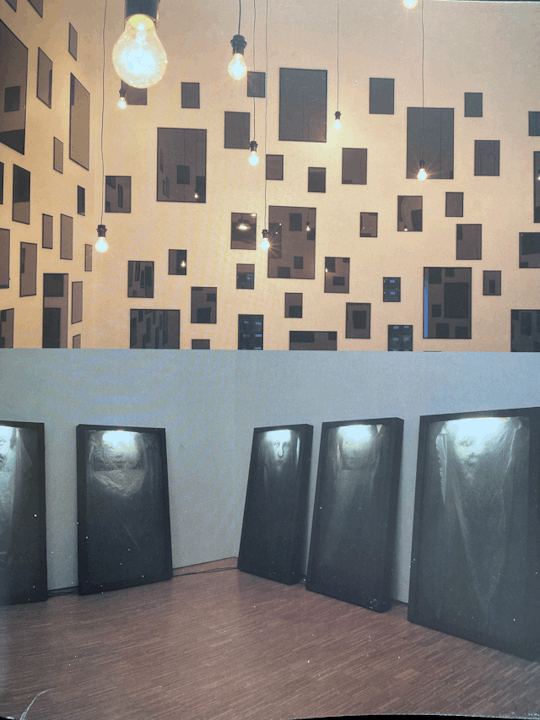
Christian Boltanski - style exhibition
Interesting to see all of these small images arranged in space. One would think that visually it would be too overwhelming or cluttered but the way each photograph is illuminated one by one on the images above, it's definitely not cluttered, it's more like that with the one single light they all have their own little "soul".
The bottom right image is the one that strongly connected to my current work and one of the pieces I want to exhibit on the show. It makes me think about the ways I can stretch my fabric on the frame. Questions arise like do I want the frame to be 100% visible? Do I want to hide part or it or the whole frame? Do I want my fabric to hang out in the bottom or I want to stretch it perfectly and get rid of the leftover fabric?
These are some of the questions I have to consider until our exhibition hanging.
Boltanski, Christian, et al. Christian Boltanski. Phaidon Press, 1997.
0 notes
Text
Tamar Garb in conversation with Christian Boltanski
B - When I create a show I always make the viewer aware that it has a beginning and an end... In the Ordinary days (1996), which I did in Dresden with Jean Colman, we created a small dark corridor at the end of which was a very bright, blinding light. The spectator's body was therefore also involved in the "viewing": looking at something actually became part of the work.
B -I remember when the Tate Gallery bought one of my pieces, Dead Swiss on Shelves with White Cotton. When I sold it, the curator mentioned that the cotton would go yellow in a few years time, so I told him that he could change it. He also said that the photos would fade, so I told him that's okay, there are more dead Swiss- I don't care which one you use. Moreover, even the shelves were not going to fit, as they had been made for different room! And the curator asked, what did we buy? And I said, well, you've bought photos of dead Swiss and shelves with white cotton. But it's not an object, it's and idea.
G - But would you expect them in ten years time to show the shadowed remains of that piece, or to renew it with new material?
B - I consider what I do to be like a musical score, and anyone can play it. But each time it's played, it means something different.
...
G - The part of body you're most interested is the face. Your work is obsessively about the face.
B - The face is so different from person to person. The spirit is revealed in the face. My work is obsessively about people. There are a lot of different people in my works.
Boltanski, Christian, et al. Christian Boltanski. Phaidon Press, 1997.
0 notes
Text
"Nothing survives in memory but a certain appearance, which however emotionally charged remains peculiarly inert. The photograph remains obstinately fixed - uninformative about the future. Thus the faces have a peculiarly obsolete intensity and intimacy..." - Donald Kuspit, In a Cathedral/Dungeon of Childhood
Notes
This short quote made me think of the memories we are trying to capture on our photos. How taking photographs was a big important thing back in the day and now we are just taking hundreds of photos in a few hours thanks to our smartphones. Back then, people dressed up for the photos, it was a special occasion. Later on, let's say in my childhood (20 years ago) before the smartphones and cameras, we had a roll of film and we only found out about the outcome when the images came back. It definitely had a certain charm. Photos back then had more meaning...
Boltanski, Christian, et al. Christian Boltanski. Phaidon Press, 1997.
0 notes
Text
Aftersun

youtube
Aftersun seemed like an interesting film, but as I watched it, it turned out that it is actually quite fitting to what I am working on at the moment. The movie is about a father and his daughter going on a vacation to Turkey. Not much is happening plot-wise, but the feel and the VHS recordings give the movie a certain atmosphere.
Later, we find out that adult Sophie is watching these collections of memories while trying to connect to her father with whom she doesn't have a relationship anymore.
This film made me think about forgetting, how we store our memories, such as VHS tapes back in time, and how this changed since we are using smartphones. While watching the movie, I started to take notes, which you will find below.
In short, I really liked the movie and the connection with my current work, but thinking about how "in the VHS era" we were storing our most important memories and now we are just taking hundreds of images without thinking or any importance made me quite sad and I started to think about ways of filtering what I take photos and videos of and trying to be more mindful focusing on the important moments of my life.
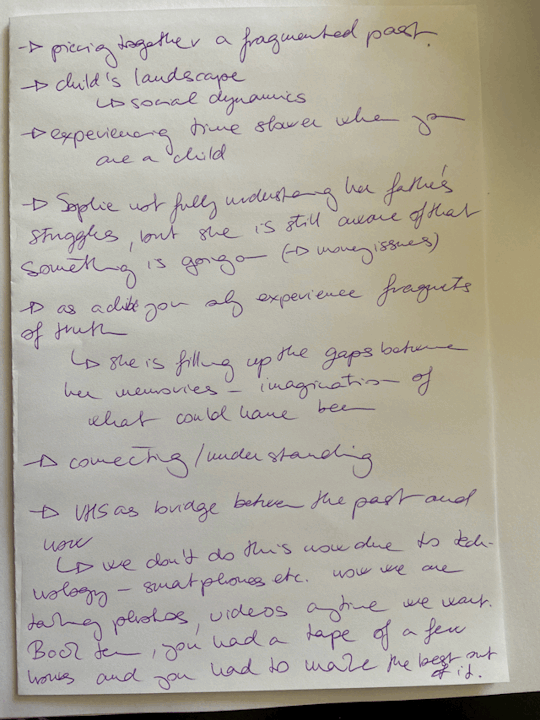

Wells, Charlotte. AFTERSUN | Official Trailer | Now Streaming on MUBI. MUBI, 2022, https://www.youtube.com/watch?v=vXKcWRu8K_U.
0 notes
Text




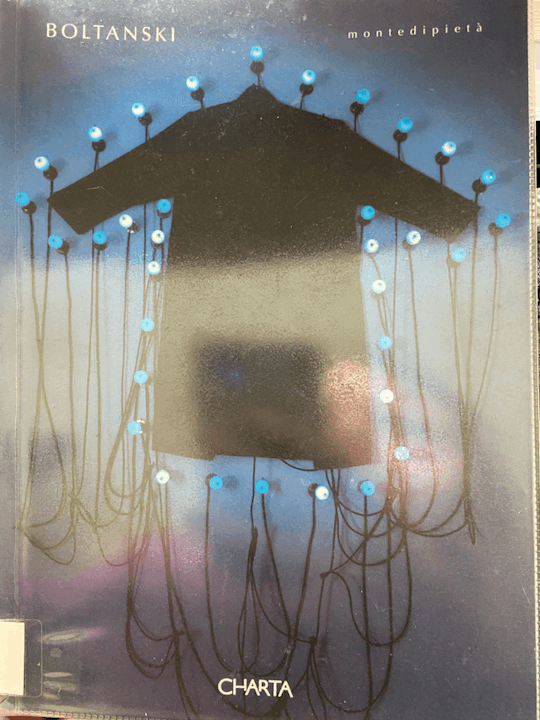
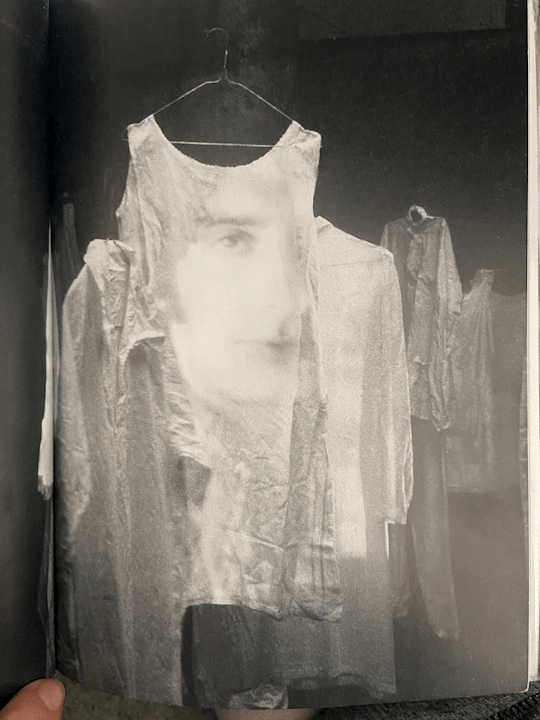

"...you die not once but twice, and the physical death is followed by the death of memory, perhaps more decisive in making a definitive cancellation when no one can associate our name with a photograph anymore. " page 30
" Boltanski sometimes submits these portraits to a procedure involving further reproductions, photographing them several times until individual features soften and the figure becomes a vague arrangement of splashes of light and shadow... " page 31
" The low voltage lightbulb with which Boltanski feebly illuminates the portraits (and sometimes objects too) thus further deepens the funeral connotation of these words reelaborating the ancient motif of the oil lamp which keeps vigil over the dead.."
Notes
1st quote - I think it's true what this quote says, we die twice, once our body then we die again when people stop talking/thinking about us. Boltanski also talked about a thing he believes in, that every adult carries a dead child inside- their childhood self who we cannot reach anymore.
2nd quote - I really liked this, as it relates to my process, where I broke down images by taking them through printmaking processes.
3rd quote - An interesting piece relating to light and darkness, themes that Boltanski likes and uses in his work.
Troisi, Sergio. Boltanski: Monte Di Pieta. Edizioni Charta Srl, 2001.
0 notes
Text
youtube
youtube
youtube
Marian Goodman Gallery. Interview, Christian Boltanski at Galerie Marian Goodman, 2021. Marian Goodman Gallery, 2021, https://www.youtube.com/watch?v=_uDL4ZkcCpQ.
Christie’s. Christian Boltanski: Théâtre d’ombres. Christie’s, 2012, https://www.youtube.com/watch?v=TDrFplT3Nug.
Ebert, John David. Understanding Contemporary Art 5.5 Christian Boltanski Part 2 by John David Ebert. The John David Ebert Channel, 2018, https://www.youtube.com/watch?v=g08FgTBi26g&t=16s.
0 notes
Text







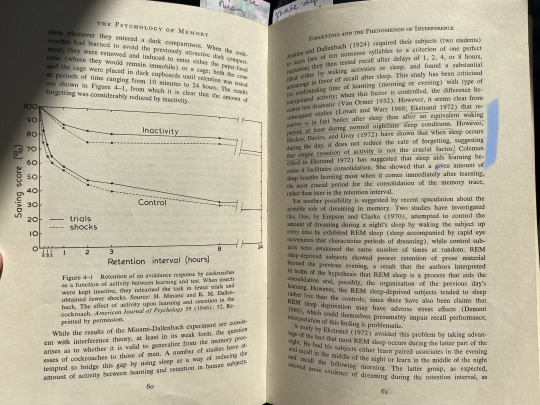






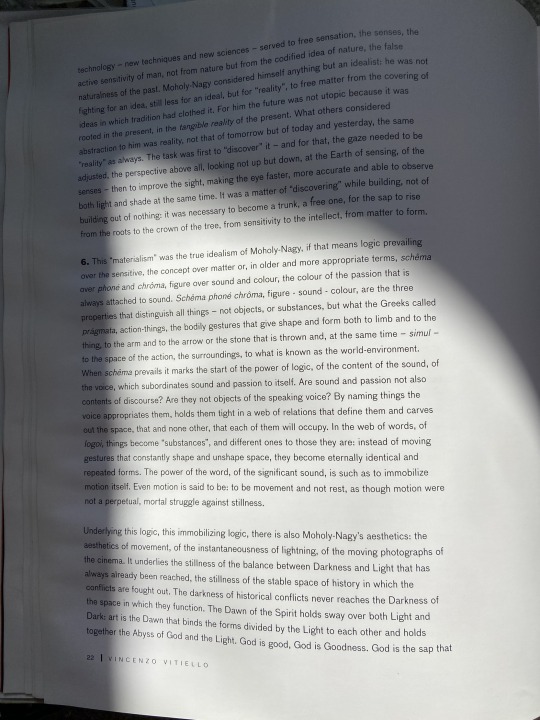

The Psychology of Memory by Alan D. Baddeley
Possibly the best book I have read through my research so far. It can get quite dry but if someone is doing research on memory I would definitely recommend this book.
Many research that was mentioned/ talked about in this book helped me understand the work I am doing at the moment because there are a few things that I was doing in my practice that I "felt like doing" while thinking about memory and how memories change and by reading this book, I realised that fragmentation, information loss and many more things are actually part of serious researches on memory.
Most likely my favourite part was the Ebbinghaus theories as they are very visual so it was easy to integrate in my practice.
Baddeley, Alan D. Psychology of Memory. Joanna Cotler Books, 1976.
0 notes
Text




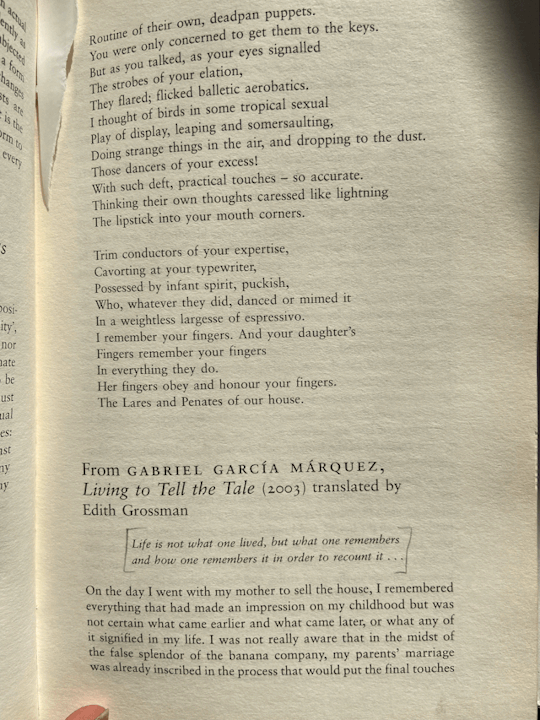
Memory, an anthology - edited by Harriet Harvey Wood and A. S. Byatt
A handful of stories I liked from this book.
The most important story from these is the Garcia Márquez one. I always loved his writings, my all time favourite book is One Hundred Years of solitude. Many times Márquez writes about memory and forgetting which I always found interesting. In One hundred years, there's a point where everyone slowly starts to forget everything, first just words but it culminates, they have to write the names on objects and furnitures until their memories return.
Here I really liked the quote:
"Life is not one lived, but what one remembers and how one remembers it in order to recount it..."
Wood, Harriet Harvey. Memory. Chatto & Windus, 2008.
0 notes
Text
Christian Boltanski - light and shadow


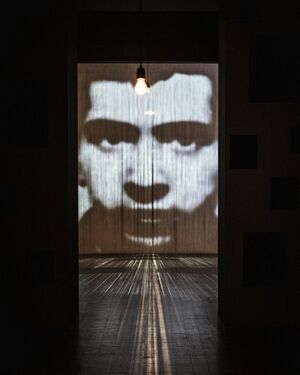








Christian Boltanski exhibitions, where he played with light and darkness. Not all of these images relate to my current work, but as an exploration, I thought I will include them. The ones that relate the most are the fabric ones. I found a few of them quite interesting, mostly the way the are hung, mimicking shower curtanis, or at least they remind me of them. In a larger exhibition space, I feel like they work very well, but in the spaces we have I feel like my work would be way too much, way too cluttered. I do like the transparency of these fabrics, very similar to the ones I am using, I like how light travels through them, but the fabric makes the light softer and more toned down.
I tried a few of these hangings with my own work, but it definitely did not work as well as it worked for him.
Tate. “Christian Boltanski.” Tate, https://www.tate.org.uk/art/artists/christian-boltanski-2305.
Ocula.com, https://ocula.com/artists/christian-boltanski/.
0 notes